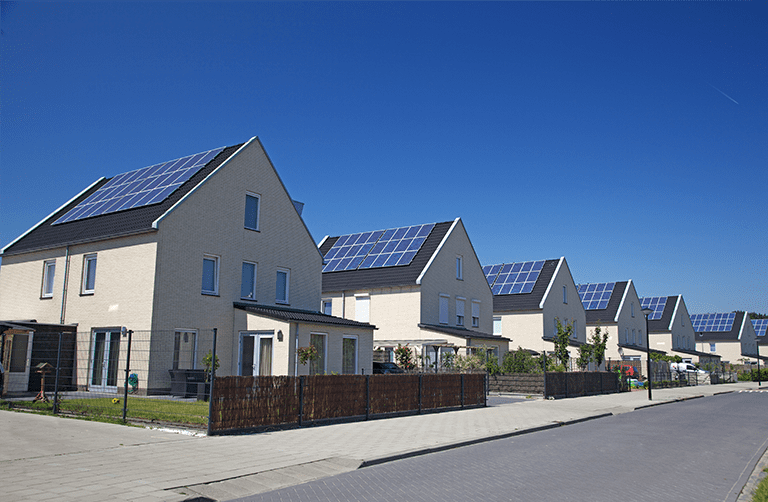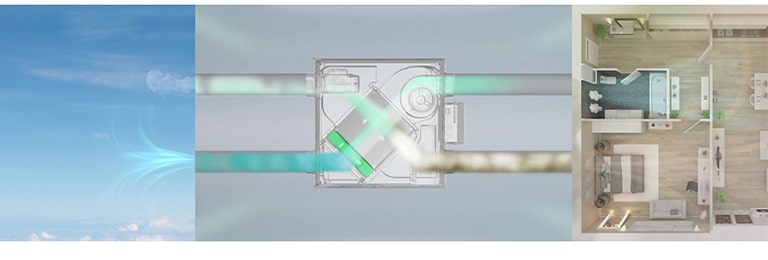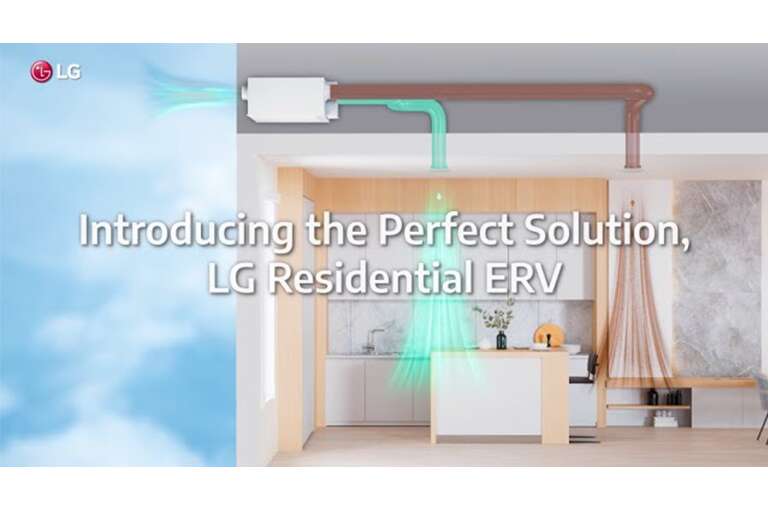-
As regulations concerning the energy performance of new building are being put in place around the world, from commercial complexes to residential homes, new buildings are becoming more efficient. The EU as even put forth an initiative to require new Nearly Zero-Emission Buildings (NZEB) to be Zero-Emission Buildings (ZEB) by 2030. However, many studies show that the NZEB trend in the construction industry is deteriorating indoor air quality. With NZEB applied, the airtightness within a building increases. This is because modern homes are built with such effective insulation, stale indoor air struggles to escape and this is where mechanical ventilation becomes essential.


or very low amount of energy required should be covered to a very significant extent by energy from renewable sources,
including energy from renewable sources produced on-site or nearby.
(Source: https://energy.ec.europa.eu/topics/energy-efficiency/energy-efficient-buildings/nearly-zero-energy-buildings_en)
-
Saving Energy Ventilation


-
The Residential ERV uses a total heat exchanger that recovers the otherwise wasted heat of the exhausted indoor air (return air) and exchanges its sensible and latent heat with the incoming fresh outdoor air, so the fresh outdoor air is pre-cooled or pre-heated to the temperature and humidity close to that of the indoor air. Test results show that more than 80% of the return air heat can be recovered under ErP heating conditions. *
*Recovers up to 85 percent of heating energy on Super High / High Mode. Test model is LZ-H015GBA6. Test conducted at an indoor temperature of 20 degrees Celsius (dry-bulb), 12°CWB and an outdoor temperature of 7 degrees Celsius (dry-bulb) in accordance with the ErP heating condition.
-
Energy savings are accomplished not only by the highly efficient total heat exchanger but also by the residential ERV's smart functionality. Energy saving functionality controls and adjusts the operation of the Residential ERV to minimize runtime and avoid unnecessary operation when conditions are favorable.
-
Cleaner Air for a Healthier Living
While it is generally good to have fresh air circulating within your home, allergens, pollen, and not to mention fine-dust make the fairy tale a little more complex. It is necessary to filter out these harmful pollutants from air coming into the home to optimize indoor living conditions. How does the ERV ensure the safe passage of clean air while stemming the infiltration of harmful contaminants? The Residential ERV has filters that remove fine-dust from the outdoor air and hygiene technology that removes germs from the air before it is introduced indoors. LG uses a prefilter for collecting larger particles and an ePM₁ filter to remove smaller particles. This standard option ePM₁ filter inhibits up to 95% of the fine dust (0.3~1.0µm in size) on its way to entering a building. *
*Captures 95 percent of fine dust with a particle size of 0.3㎛. Tested by Korea Conformity Laboratories at a temperature of 23±5 degrees Celsius with a relative humidity of 45±10 percent.


-
LG’s UVnano technology has got outdoor air introduced indoors covered. The UV light breaks down the viruses and bacteria at the cellular level, annihilating 99.99% of the would-be intruders from the pre-filter. * The efficacy the LG UV LED was accredited by the international testing institute TUV Rhineland. Additionally, to ensure delivery of healthy and clean air, LG applies a bacterial and mold resistant air passage material (EPS) and mold resistant material for the heat exchanger. **
*Tested by TÜV Rheinland by measuring the number of bacteria colonies (Staphylococcus aureus, Staphylococcus epidermidis, Klebsiella pneumoniae) at a temperature of 25±2 degrees Celsius with a relative humidity of 50±10 percent after 2 hours of product operation.
**Heat exchanger mold resistance performance tested by Fiti Testing & Research Institute and certified as 0 grade. Testing was conducted in compliance with ASTM G21-15, with testing conditions as follows: 28-30℃, 85%RH or higher, 28 day duration. Results may vary depending on the environment. Air passageway bacteria resistance was tested by Fiti Testing & Research Institute with antibacterial activity certified as R4.6 (Strain 1), R6.2 (Strain 2). Testing was conducted in compliance with JIS Z 2801: 2010, film adhesion method with test conditions as follows: (35+/-1)℃, 90%RH for 24 hours. Results may vary depending on the environment.
-
Last, but certainly not least, dual fine-dust sensors and a CO₂ sensor allow for real-time monitoring of indoor air quality. This multi-pronged approach ensures that the residential ERV has your bases covered – taking the hassle out of indoor air quality optimization.
-
Find Comfort in Convenience


-
Monitoring CO₂ levels is essential to establishing optimal conditions because CO₂ level indoors is another indicator of the air quality. The ERV is calibrated to keep CO₂ levels below 1000ppm – the medical standard for maintaining a healthy living environment. Users can check air quality status via the ThinQ app, the optional wired remote controller, or a compatible smart home controller. Conveniently, ventilation performance is automatically adjusted in accordance with CO₂ levels detected via the CO₂ sensor included in the ERV system.
The combination of two fine-dust sensors provides real-time particle detection to determine the performance of the filter. When the level of fine-dust concentration in the air being supplied into the home exceeds the designated standard, a notification lets you know it’s time to replace the filter.
In modern times, to ensure optimal living conditions, it is necessary to be vigilant in the caretaking of indoor air quality. This has been exacerbated by climate change, a general increase in pollutants, particularly in large cities. The culmination of these factors and regulations related to energy efficiency has proven the need for NZEB development. As NZEB construction projects continue to emerge, energy efficient mechanical ventilation that provides fresh air while minimizing energy loss are also becoming essential. LG Residential ERV is a smart solution that allows you to maintain fresh air in your home without worrying about energy loss.
Please click the 'INQUIRY TO BUY' banner below to contact your local LG office for further information on solutions and products.








